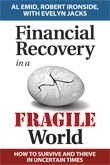Last updated: June 27 2012
Changes to mortgage rules meant to protect Canadians
The federal government is tackling an area the Organization for Economic Co-operation and Development (OECD) highlighted as a trouble spot in its June Economic Survey of Canada: Canada's overheated housing market. As of July 9, the feds are making adjustments to the rules governing government-backed insured mortgages that should slow the rush of Canadians to acquire homes by taking on too much debt.
The Department of Finance has announced four measures for new government-backed insured mortgages with loan-to-value ratios of more than 80%:
ï The maximum amortization period will be 25 years, reduced from 30 years. The maximum amortization period was set at 35 years in 2008 and reduced to 30 years in 2011.
ï The maximum amount Canadians can borrow when refinancing will be 80% of the value of their homes, not 85%.
ï The maximum gross debt-service ratio will be set at 39% and the maximum total debt service ratio at 44%.
ï Government-backed insured mortgages will be available only on homes with a purchase price less than $1 million.
The changing rules are meant to help Canadians with high loan-to-value mortgages reduce their total interest payments, build up home equity and reduce the risk that higher interest rates would jeopardize their financial stability.
For example, a household with a $350,000 mortgage bearing a 3% interest rate would save $184 a month by reducing the amortization period to 25 years from 30. Over the life of the mortgage, that becomes a $33,052 savings. As interest rates go higher, the savings are greater. At 5% interest rates, the borrower would save $61,765 with an amortization period of 25 years vs 30 years.
As Finance Minister Jim Flaherty said in the press release: "The adjustments we are making today will help [Canadians] realize their goals, build on the previous measures we have introduced to keep the housing market strong, and help to ensure households do not become overextended.î


